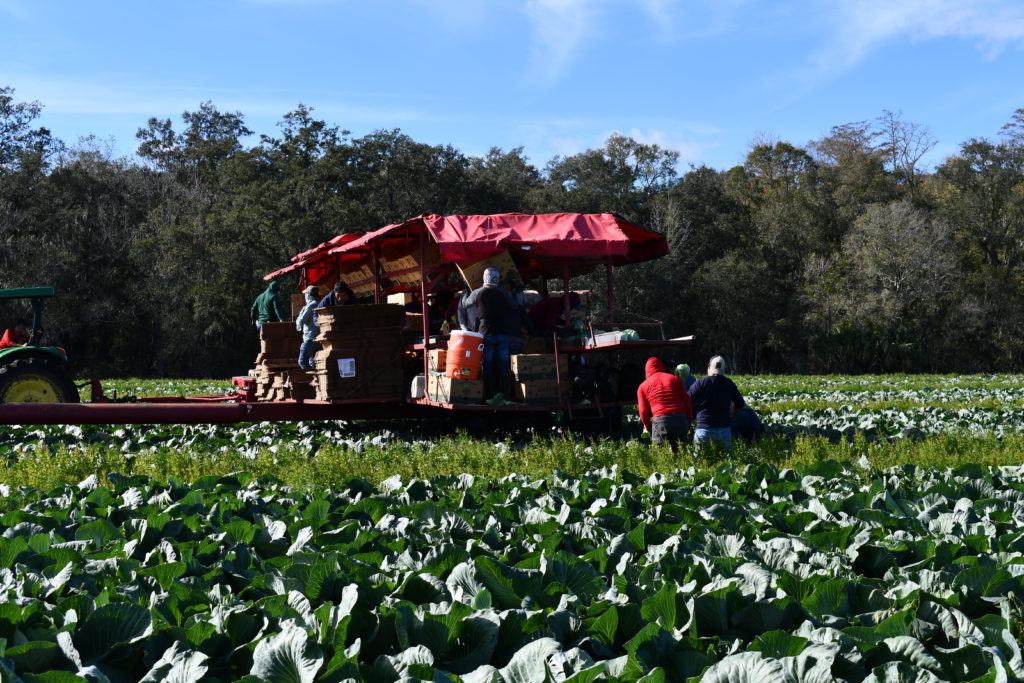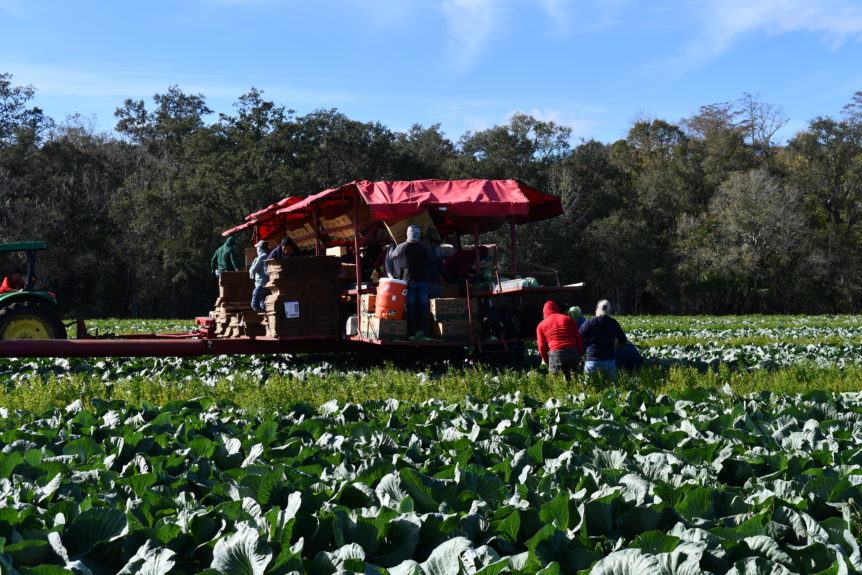
By Frank Giles
There’s never a shortage of news when it comes to the H-2A visa program, which Southeastern specialty crop growers have come to rely on for labor. It is the go-to program for farmers who need larger numbers of employees to grow and harvest crops.
But in an environment where inflation has pushed up the prices of just about everything, growers are finding it harder to absorb the costs associated with the H-2A program. There have been multiple efforts to make meaningful reforms to the program, but most have stalled. In the meantime, costs continue to escalate.
Senators Speak Up
In March, Sen. Rick Scott (R-FL) joined Sen. Mike Crapo (R-ID) and 14 other fellow senators in writing a letter to the Senate and U.S. House of Representatives leadership urging the bodies to take legislative action to freeze the H-2A program’s adverse effect wage rate at the first possible chance.
The letter begins: “We write to share our concerns about the annual adjustment to the Farm Labor Survey (FLS) Adverse Effect Wage Rate (AEWR). On January 1, 2024, new FLS AEWRs went into effect, placing further strain on farmers and ranchers already struggling with elevated input costs. The H-2A community anticipates increases in the Occupational Employment and Wage Statistics (OEWS) AEWR later in the year as well. We urge you to include an AEWR freeze in the earliest possible legislative vehicle.
“The increasing cost of labor for agriculture producers is unsustainable. According to the
American Farm Bureau Federation, the national average AEWR will be $17.55 this year. That represents an increase of 5.6% from 2023, the third year in a row the AEWR increased by over 5%. In fact, the national average AEWR has more than doubled since 2005. This is compounded by the increased costs of inputs like energy and fertilizer, other guest worker expenses such as housing and transportation, and forthcoming expenses imposed by new regulations and fees.”
Labor Crisis
Farm groups were quick to voice support of the freeze, noting that it is time to recognize the labor situation for what it is — a crisis.
“Farmers are suffering through a worsening labor crisis, and something must be done to modernize an outdated farmworker system,” said John Walt Boatright, director of government affairs at American Farm Bureau. “While a permanent solution is needed, we appreciate these lawmakers who are working to deliver short-term relief so farmers can continue to grow the food America’s families rely on.”
Roadmap for Relief
In March, the U.S House of Representatives Committee on Agriculture released its Agricultural Labor Working Group’s final report on addressing the problems growers are facing on that front. The bipartisan group offered up 25 initial proposals to improve the H-2A program. Twenty-one of those proposals were adopted and 15 were unanimously approved.
The Georgia Fruit & Vegetable Growers Association (GFVGA) applauded the report and said solutions to H-2A can’t come quickly enough. The association noted mandated wage rate increases in the program the past two years have cost Georgia growers more than $160 million.
“We hope that Congress will address these recommendations with the same sense of urgency that our growers need in order to remain competitive in the global market. Rule changes and AEWR increases continue to make the program more difficult to use, more expensive and have put Georgia growers at a decided disadvantage to our foreign competitors,” said Chris Butts, executive director of GFVGA. “We now have a roadmap to bring relief to U.S. growers and we urge Congress to act now.”
Report Highlights
Some highlights from the report include:
- Single portal for filing H-2A applications: This would create a new more user-friendly web-based system to process applications for the visas.
- Allow H-2A employees to apply for staggered worker entry: This would allow employers applying for H-2A workers to stagger dates of entry to better match workload needs on the farm.
- Streamlined recruiting for H-2A: This would allow growers to file job postings on an electronic registry rather than only filing newspaper advertisements.
- U.S. Department of Agriculture (USDA) consultation: This would require the Department of Labor to consult with USDA and allow the agency to provide written comment prior to publishing a rule or change to the H-2A program.
- De minimis exemption from AEWR: This would provide flexibility in the H-2A wage calculation to provide an exemption for work performed that is ancillary to the worker’s main contracted job. A de minimis exemption is defined as not more the 25% of a worker’s total weekly hours.
- Wage reform for H-2A program: This would modify the program to better reflect the real world, while protecting against sudden wage increases that disrupt employer planning and operations.
Specialty Crop Competitiveness
The Florida Fruit & Vegetable Association (FFVA) also weighed in on the labor crisis in a letter submitted to the USDA in March. The association outlined recommendations on how it could better support the state’s specialty crop industry through the USDA’s Specialty Crop Competitiveness Initiative. The letter also addressed foreign imports of fruits and vegetables disrupting the domestic marketplace.
On the labor issue, FFVA president Mike Joyner noted that labor makes up about 50% of specialty crop growers’ input costs. And when all the added costs of transportation, housing and wages are factored in, H-2A labor is about $25 per hour. That’s well above Florida’s 2024 AEWR of $14.77.
“These large workforces are needed on a seasonal basis, and the workload does not exist for employers to support year-round employment,” Joyner noted in the letter to USDA. “Unfortunately, Florida has long endured a worsening domestic labor shortage, and the availability of U.S. workers to work in seasonal agriculture is insufficient to meet the needs of Florida’s specialty crop industry.”
One solution FFVA offered in the letter was more funding from USDA to develop mechanization and automation to help reduce the need for human labor.
In the pages of an agricultural trade publication, reporting on the need for labor reform is preaching to the choir, but hopefully the larger public will wake up to what’s happening on the farm. There are some signs of that in increased reporting from the mainstream media. But the industry must keep beating the drum on the labor issue because it is a threat to our food security.










